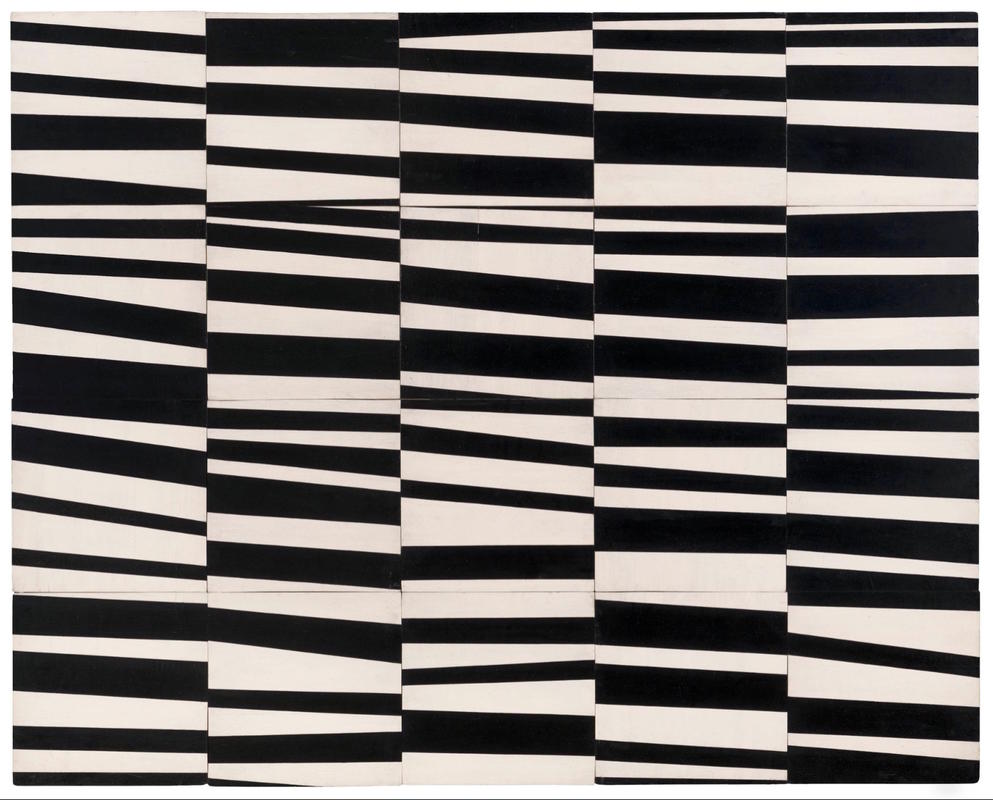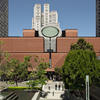More about Cité

Contributor
Despite being reminiscent of a jagged railroad track, Ellsworth Kelly’s Cité came to him in a dream.
The calculated and organized chaos of this dream-state composition began while Kelly was living in Paris with Hans Arp and John Cage, guardians of artistic lawlessness. With the aid of these two purveyors of chance, Kelly’s brilliant artistic mind “dreamt he was working on a scaffold… creating an immense mural composed of square panels on which we painted black bands with huge brushes.” So his dream did portend, so he painted.
This inspired dream was the foundation of a period where Kelly’s work was characterized by gridded compositions developed through chance and chaos. The seeming order behind the large swaths of black and white brushstrokes was overturned, quite literally, when Kelly turned the composition upside down and proceeded to cut it into 20 squares. These in turn were “randomly” rearranged and the panels were reconnected into the final product.
The apparent “randomness” of this act demonstrates Kelly’s impulse to suppress unique artistic gesture for spatial unity. Although his artistic decisions did ultimately dictate the final composition, he effectively reduced the artist’s emotion and disconnected him from the resulting work. Kelly’s controlled creativity made the most of the chance collisions with the unexpected and impersonal forces that Hans Arp and John Cage encouraged. It also played a pivotal role in the development of abstract art in America.
Some, yes that includes me, say Cité reminds them of the chaos of a cityscape, abstractly reminiscent of his beloved Parisian streets. Upon dreaming of this seminal piece, Kelly said he had an “idea for a very grand work, something to be used with architecture.” In Cité, Kelly draws the resemblance between dreams and the sharp lines of the city streets.
Sources
- “Ellsworth Kelly, Cite, 1951.” SFMOMA. San Francisco Museum of Modern Art, 2017. Web. November 30, 2017. https://www.sfmoma.org/artwork/99.341#view-artwork
- “Ellsworth Kelly.” The Art Story. The Art Story Foundation, 2017. Web. December 5, 2017. http://www.theartstory.org/artist-kelly-ellsworth-artworks.htm#pnt_2
- “Study for ‘Cite’: Brushstrokes Cut into Twenty Squares and Arranged by Chance.” Art Institute of Chicago. Art Institute of Chicago, 2017. Web. December 2, 2017. http://www.artic.edu/aic/collections/artwork/155990
- “Cite by Ellsworth Kelly.” Artsy. Artsy, 2017. Web. December 8, 2017. https://www.artsy.net/artwork/ellsworth-kelly-cite











